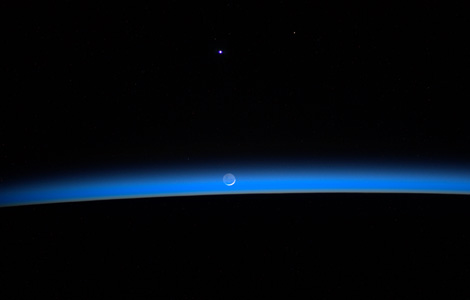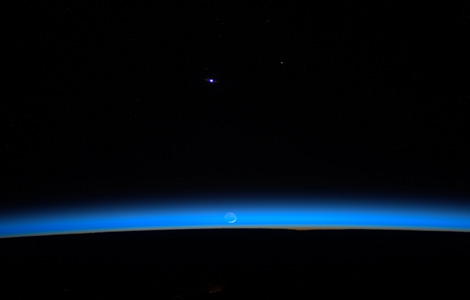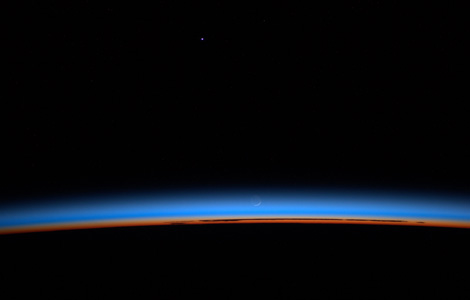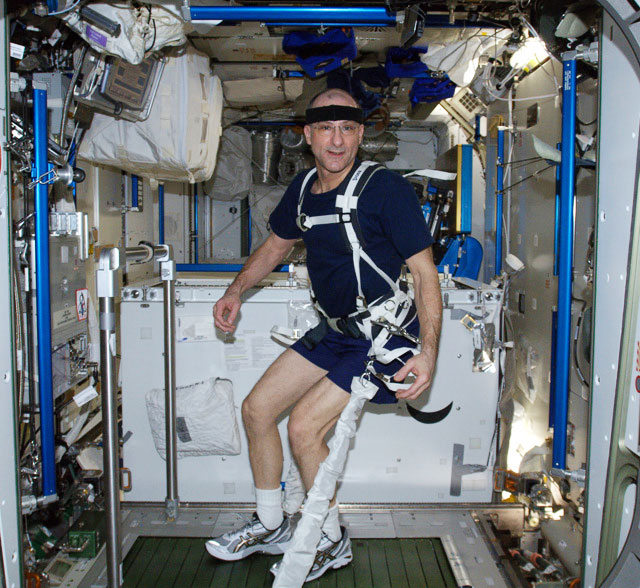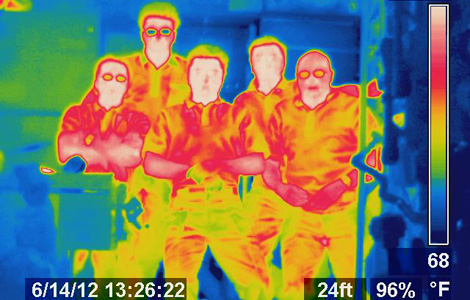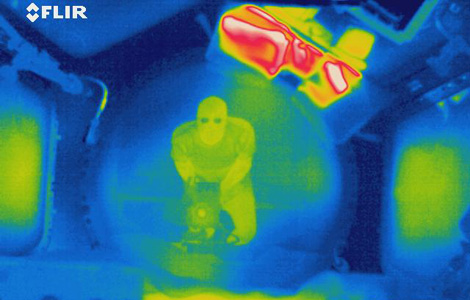How to be civilized on the space frontier
Chapter 6: Having company for dinner.
It does not matter that you’ve seen the same faces every day for months on end; you’d still like to invite everyone over to “your module” for dinner. With invitations accepted, you prepare for the occasion. But what is the expected etiquette for entertaining in orbit? How do you arrange things so your guests will not think you are gauche? Here are a few space-tested guidelines to help in the preparations.
Have plenty of food, and serve your very best. Now is the time to break out those thermal-stabilized pouches of beef steak that you have been hoarding. Bring out any specialty item from your personal crew allotment (these items arrive on the periodic unmanned resupply spacecraft that visit us). Perhaps you can share a can of smoked anchovies, New Mexico green chili, or a piece of Old Amsterdam cheese. Always serve something special that is not repeatedly eaten on the standard nine-day menu. Being generous now will reap more benefits than eating these delicacies in solitude.
The choice of beverage is rather limited. You can serve the standard ones: coffee, tea, and artificially flavored, artificially colored, sugar-loaded, fruit-replica drinks. All, of course, are served in a bag, and you sip the fluid through a straw. The image of an insect sucking the juices from some lower insect may come to mind, but in space it is considered impolite to give voice to such imagery.
You can provide a special treat if you have access to one of the research refrigerators. In space, all your food is either hot or at room temperature. When you live in an isothermal environment, it can be a real treat to serve your guests a bag of cold water.
For special occasions—perhaps after a space walk or the docking of a resupply vehicle—you can serve your beverages in a “zero-g” cup. This is something you will have to make from scrap plastic sheeting (instructions are in Appendix C). These cups allow you to sip beverages from an open container, like we do on Earth. Zero-g cups, unlike bags with straws, are better for social rituals like toasting, and will bring a smile to the faces of your guests.

It is important to dress up your galley. Have full packets of wet and dry wipes within easy reach on the galley table. Take any partial packets and save them for another time. Empty the trash bins. A full trash bin is problematic; a handful of small things typically float out when new items are added. This rudely interrupts conversation while everyone scatters to collect the floating debris. It is good to have two trash bins; the standard-sized one for largish items, and an old wet wipe container for small ones. This separation of smaller trash—cutoff pouch corners, food crumbs, and wrappers—helps prevents their release when the lid is opened. Be sure to label this wet wipe container “trash”. Newly arrived crew may not be aware of this trash protocol, so it is best to politely demonstrate by example. They will learn quickly enough.
Clean the food scissors. Scissors are needed to open food pouches, as tearing them along the built-in perforations usually results in liberating hot droplets of fatty ooze and other asteroid-like particles. That’s why, if the scissors aren’t kept clean, they become caked in solidified gravy to the point where they become glued shut (not to mention being slightly repulsive). Such a state is considered rude, so clean your scissors before the guests arrive.
Always have a loaner spoon available. In weightlessness, it is easy to lose things. It is not unusual in a group of six for someone’s spoon to have floated off. Having a clean loaner spoon allows for the evening to continue and the conversation to flow. It is rude to give your guest a loaner spoon caked in crud from the last time it was used. The lost spoon is usually found by morning, stuck to a ventilator inlet screen, and your guest will appreciate it being returned.
Always put out new tape. The galley table has multiple spots of Velcro to park packets of food. However, not all packets and pouches have mating spots of Velcro, which means they can’t be set down on the table. Several strips of duct tape, carefully folded so the adhesive side is out (see Appendix D for instructions), allows such containers to be parked on the table. Tape left over from the previous week, while perfectly functional, collects errant crumbs, hairs, lint, and other unsightly things. Displaying dirty tape is exceedingly rude to your guests; always put out new, clean tape.
In space, catching food in your mouth is considered polite. Opening wide and making a clean catch will most always bring cheers from your guests. In one impressive gulp, you can leave them with the image of some sea creature inhaling another. Catching food in your mouth, like belching at the table (considered impolite in most cultures, but a compliment to the chef in others) is rude on Earth but de rigueur in space.
By following these simple rules, you will ensure a delightful evening with your guests. And remember, on the space frontier, the etiquette book is still being written. I encourage you to invent new ways of conducting everyday life, including entertaining. It is one of the reasons we find ourselves here in the first place.
Don’s blog also appears at airspacemag.com.



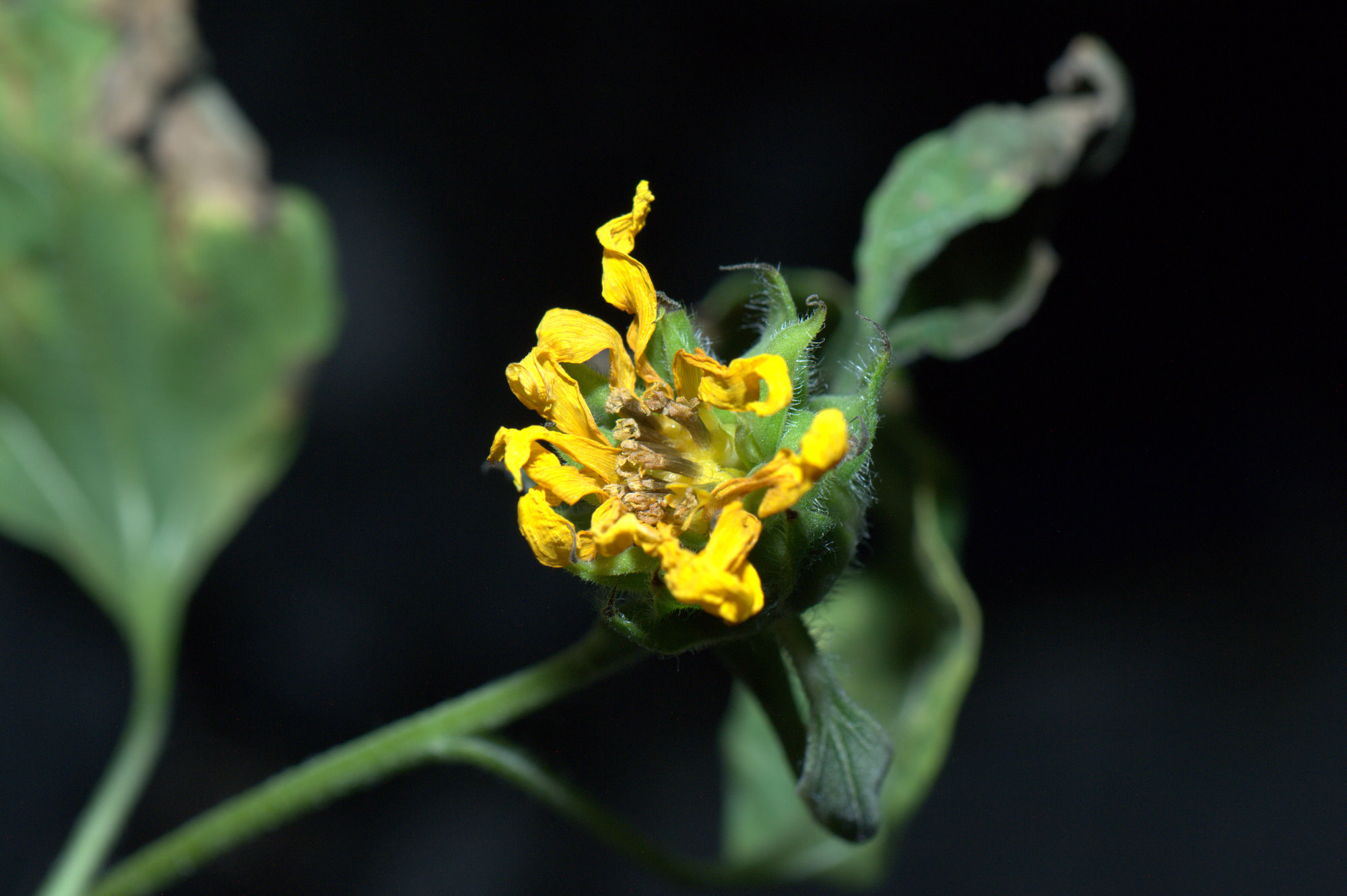

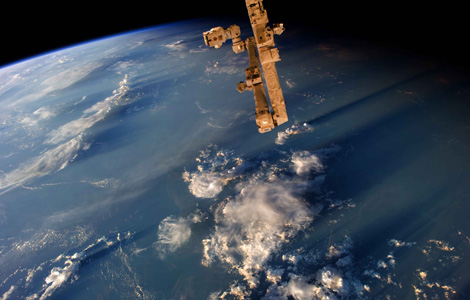 When a frontier feels like home, it is no longer a frontier; it has become “civilization.” Those determined to wander must now pack their bags and move further into the cosmos.
When a frontier feels like home, it is no longer a frontier; it has become “civilization.” Those determined to wander must now pack their bags and move further into the cosmos.